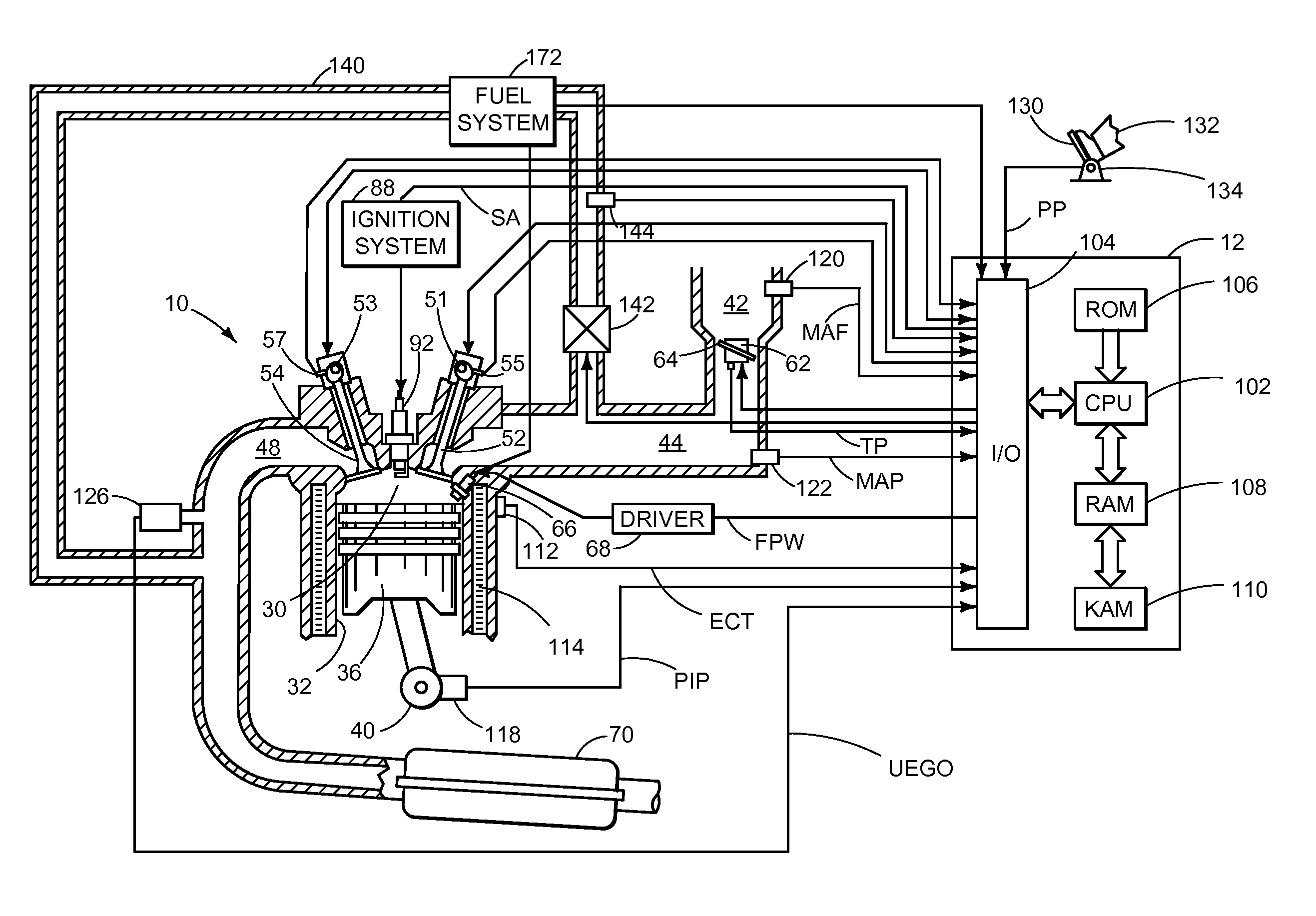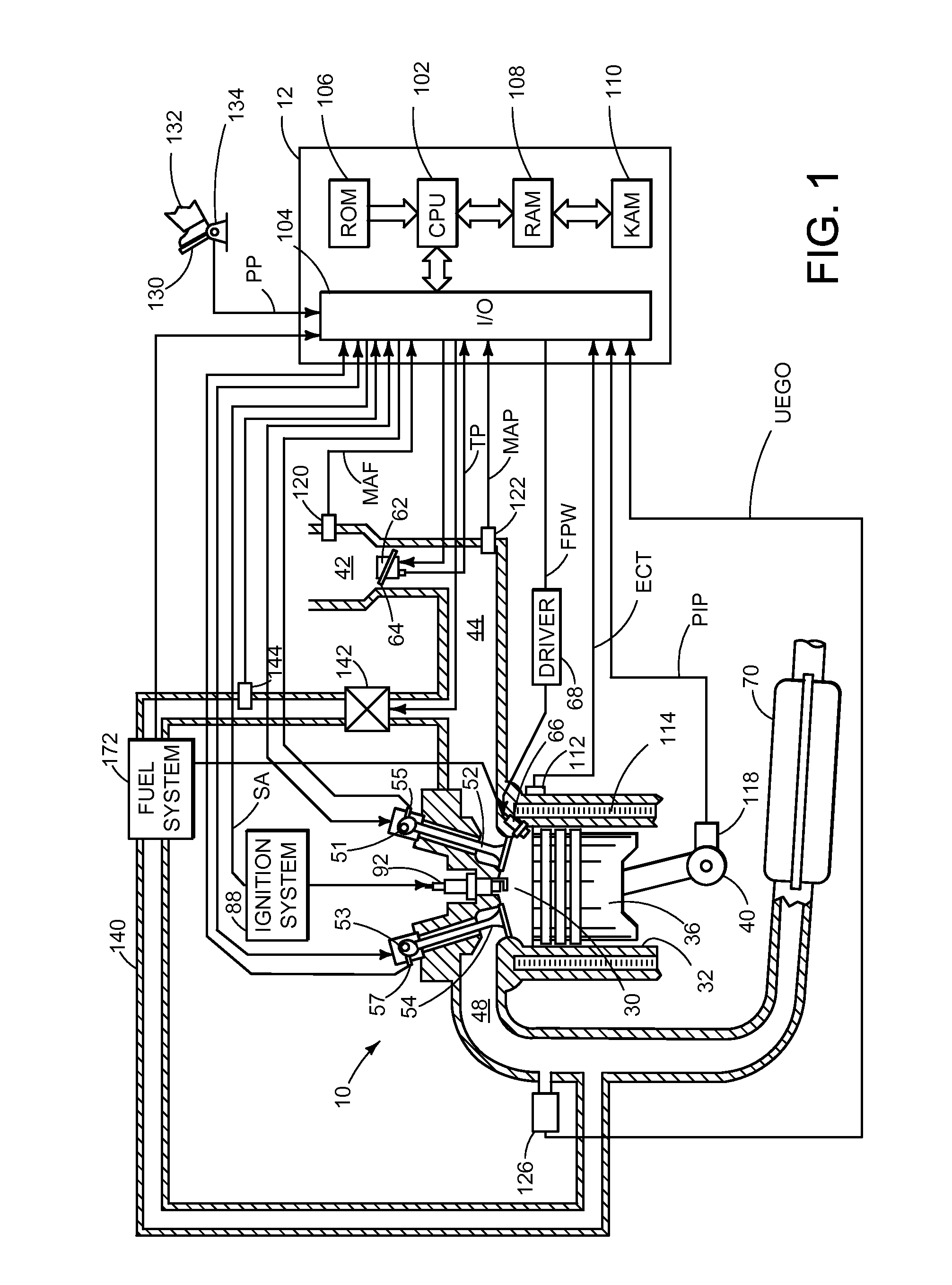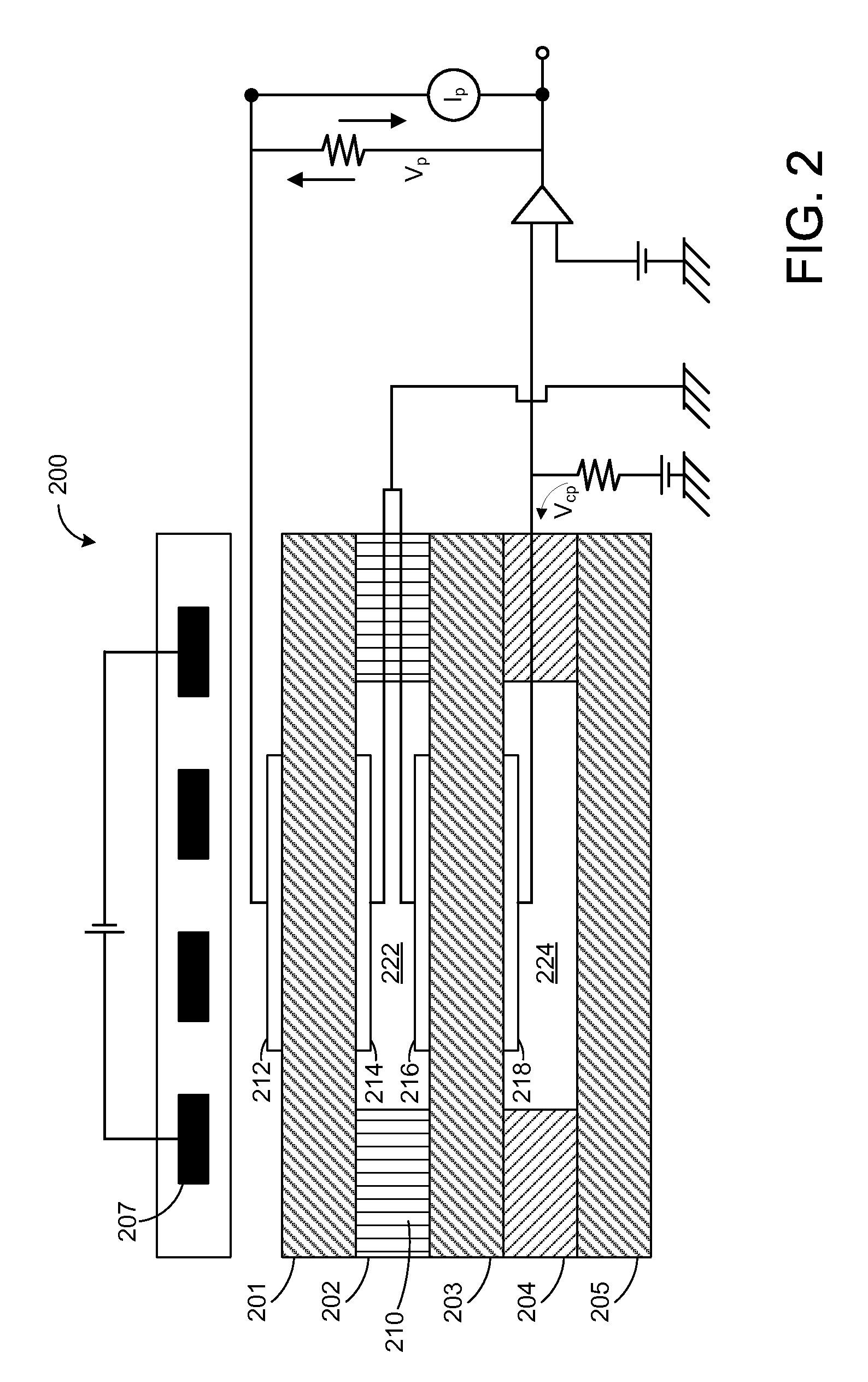Humidity and fuel alcohol content estimation
a technology of applied in the field of exhaust gas sensors, can solve the problems of degrading engine performance, confusion of inferred results, and error in corresponding humidity and fuel alcohol content estimation, and achieve the effects of reducing component size, high accuracy and reliability, and performing quickly and accurately
- Summary
- Abstract
- Description
- Claims
- Application Information
AI Technical Summary
Benefits of technology
Problems solved by technology
Method used
Image
Examples
Embodiment Construction
[0017]The following description relates to a method for determining an amount of alcohol in a fuel mixture (e.g., ethanol and gasoline) based on outputs from an exhaust gas sensor, such as an oxygen sensor. The exhaust gas sensor may be used to determine an amount of water in a sample gas which represents an amount of water in the exhaust gas at the time of the measurement. For example, a first voltage may be applied to the sensor to determine an air-fuel ratio error based on an expected air-fuel ratio and an actual air-fuel ration. Then, first and second voltages may be alternately applied to the sensor to generate first and second pumping currents (e.g., sensor outputs). Under engine non-fueling conditions such as deceleration fuel shut-off, the outputs of the sensor may be corrected based on the air-fuel ratio correction factor and used to generate an indication of ambient humidity. During engine fueling conditions, the sensor outputs may be corrected based on the air-fuel ratio ...
PUM
 Login to View More
Login to View More Abstract
Description
Claims
Application Information
 Login to View More
Login to View More - R&D
- Intellectual Property
- Life Sciences
- Materials
- Tech Scout
- Unparalleled Data Quality
- Higher Quality Content
- 60% Fewer Hallucinations
Browse by: Latest US Patents, China's latest patents, Technical Efficacy Thesaurus, Application Domain, Technology Topic, Popular Technical Reports.
© 2025 PatSnap. All rights reserved.Legal|Privacy policy|Modern Slavery Act Transparency Statement|Sitemap|About US| Contact US: help@patsnap.com



